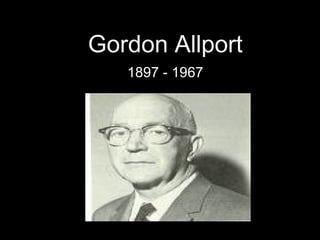Gordon Allport was an influential American psychologist who developed the trait theory of personality. Some of his key contributions included defining personality traits as neuropsychological structures that influence behavior across situations. Allport emphasized that while common traits exist, each individual has a unique personality composed of cardinal traits. He also described the development of personality from secondary to central traits and the importance of functional autonomy in mature personalities. Allport's trait theory provided an important framework for understanding individual differences in personality.





























